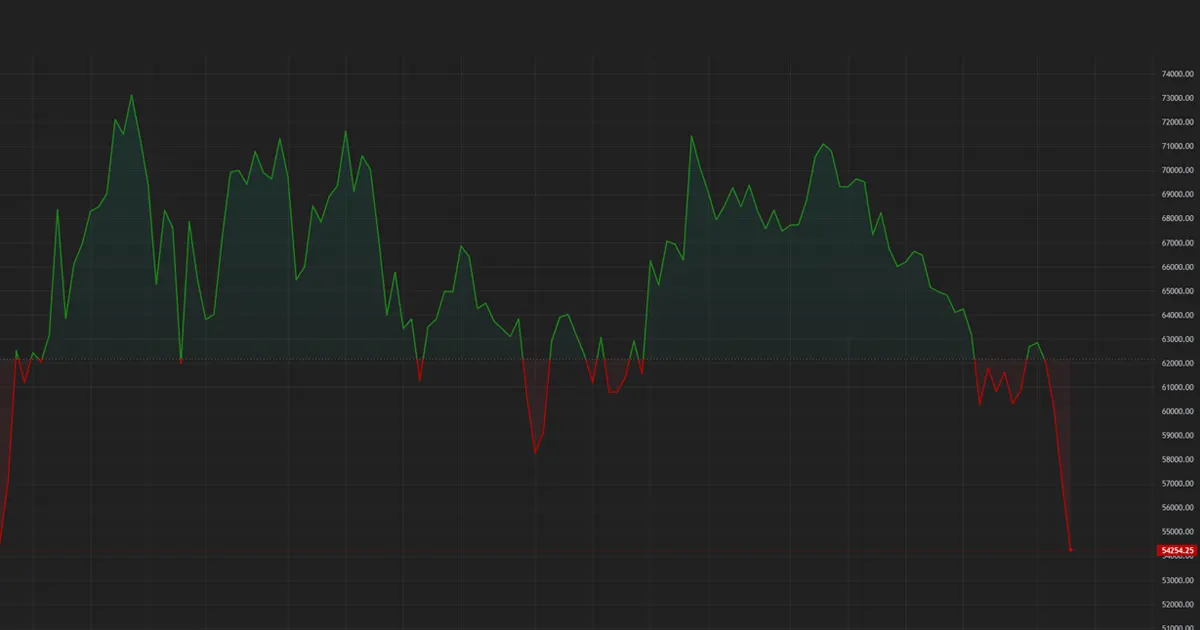5-7-2024 (LONDON) In a stark contrast to the record highs observed in global stock markets, the cryptocurrency world has been experiencing a prolonged sell-off, with Bitcoin leading the charge as it sank for the fourth consecutive trading session.
The world’s largest digital asset plummeted as much as 8.1% on Friday, hitting its lowest level since February at around $54,190 as of 12.21 pm in Singapore. Smaller cryptocurrencies like Ether, XRP, and Cardano faced even steeper losses, with some declining over 10%.

Crypto speculators are currently grappling with a range of challenges, including waning demand for US Bitcoin exchange-traded funds (ETFs), indications that governments are offloading seized tokens, and the uncertainty surrounding the impact of political turmoil in the United States.
Adding to the mix is the ongoing return of a massive Bitcoin hoard worth $8 billion to creditors by the administrators of the failed Mt. Gox exchange. Investors are uncertain about the extent to which this tranche will be sold off, further exacerbating market volatility. In a significant development, a Mt. Gox-linked wallet moved $2.7 billion worth of Bitcoin on Friday, according to Arkham Intelligence.
Interestingly, the correlation between Bitcoin and MSCI Inc’s gauge of global stocks, which is hovering near record highs, is rapidly diminishing. The 30-day correlation between the two assets is plunging, raising questions about whether the risk aversion in the crypto market is an isolated phenomenon or a harbinger of a more cautious quarter for mainstream investments after a strong first-half performance for equities.
“There’s just a general lack of buzz in crypto markets right now,” said Stefan von Haenisch, head of trading at OSL SG Pte. “Most news that is currently being spread, for example Mt. Gox selling, is more bearish in nature.”
Von Haenisch suggested that the crypto market needs more dovish signals on monetary policy from the Federal Reserve, specifically “one to two rate cuts, coupled with Fed balance sheet expansion,” to regain its momentum.
Investors are eagerly awaiting the US jobs data scheduled for release later on Friday, which could provide crucial insights into the outlook for Fed policy. Soft economic reports in recent months have bolstered the case for the US central bank to loosen monetary settings in the coming months, potentially providing a tailwind for the crypto market.
Bitcoin reached an all-time high of $73,798 in March, buoyed by unexpectedly strong demand for the inaugural US ETFs for the token. However, the inflows have since ebbed, weighing on Bitcoin’s price and casting a pall over the broader digital asset market.
While approvals for debut US ETFs for Ether, the second-largest cryptocurrency, are pending, interest in these products could be mixed if the crypto selloff persists.
Over $800 million worth of bullish crypto bets were liquidated in the past three days, marking one of the heaviest such liquidations since April, according to data from Coinglass.
“Poor weekend liquidity will exacerbate any moves triggered by liquidations, even small ones,” cautioned Caroline Mauron, co-founder of digital asset derivatives liquidity provider Orbit Markets. However, she added that the return of US investors from the July 4 holiday could help bring some stability to the market.
The operators of the energy-intensive computers that underpin the Bitcoin blockchain continue to grapple with the financial impact of April’s so-called halving, which reduced the new tokens they receive for their work. In response, some Bitcoin miners have been forced to sell a portion of their token inventory.
“The $51,000-$52,000 range is crucial as a lot of Bitcoin miners are reaching their break-even point for profitable mining,” said Le Shi, head of trading at market making and algorithmic trading firm Auros.




